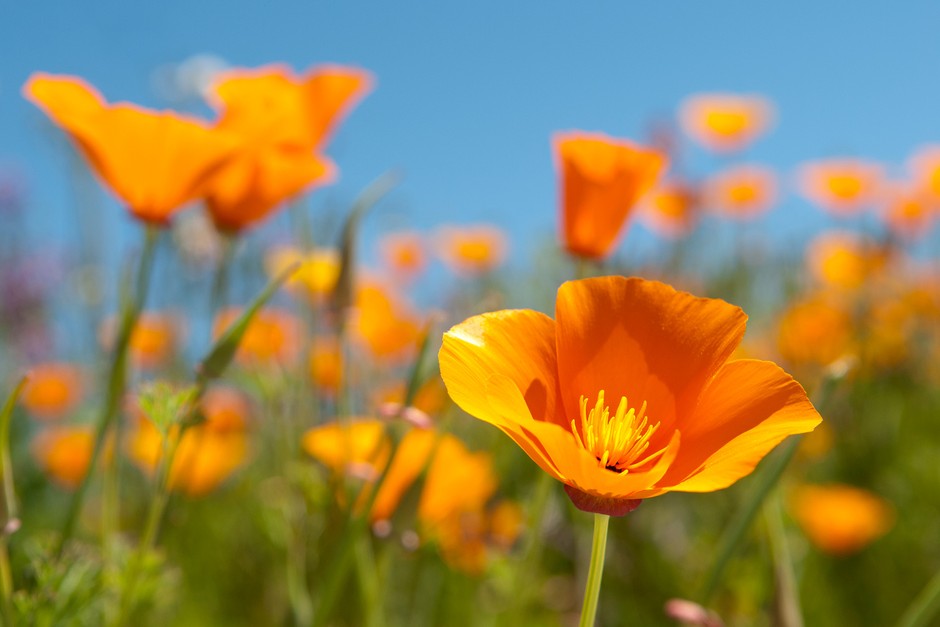Creating a vibrant and low-maintenance garden is a goal that many gardening enthusiasts aspire to achieve. The concept of self-seeding plants has gained immense popularity among gardeners due to its ability to provide a continuous supply of beautiful blooms and foliage without constant intervention. Imagine planting a few seeds or seedlings and watching as your garden becomes a tapestry of colors and textures, with new plants popping up year after year. This phenomenon is the magic of self-seeding plants, a boon for both seasoned gardeners and those just beginning their gardening journey.
Understanding Self-Seeding Plants:
Self-seeding plants, also known as self-sowers or volunteers, are plants that produce seeds that naturally fall to the ground and germinate without the need for human intervention. These plants have evolved mechanisms to scatter their seeds, ensuring the survival of the species. This process closely mimics the natural cycle of plants in the wild, where seeds are dispersed by wind, water, or animals, allowing them to establish new growth in favorable conditions.
Pros of Self-Seeding Plants:
Embracing self-seeding plants in your garden comes with a plethora of benefits that contribute to a flourishing and dynamic landscape:
Low Maintenance: One of the most significant advantages of self-seeding plants is their low maintenance nature. Once they are established, they require minimal care. Since they are adapted to your local climate and soil conditions, they often thrive without the need for excessive watering, fertilization, or pest control.
Cost-Effective: Self-seeding plants provide excellent value for your gardening investment. A single initial planting can yield numerous generations of plants, eliminating the need to buy new seeds or seedlings each year.
Natural Beauty: Self-seeding plants lend an air of authenticity and natural beauty to your garden. They give a sense of wildness and serenity, creating a more relaxed and informal atmosphere.
Adaptation to Conditions: These plants tend to be well-suited to the specific conditions of your garden, as they have adapted over time to your climate, soil, and other environmental factors. This often makes them hardier and more resilient than exotic species.
Biodiversity: Self-seeding plants promote biodiversity by attracting a variety of pollinators, birds, and beneficial insects. This creates a healthier ecosystem within your garden and contributes to the overall well-being of your landscape.
Continuous Blooms: Self-seeding plants often have extended blooming periods, ensuring that your garden remains colorful and lively throughout the growing season. As one set of plants completes its lifecycle, new plants emerge to take their place.
Garden Evolution: The dynamic nature of self-seeding plants means that your garden is constantly evolving. New combinations of plants and unexpected arrangements can create a unique and ever-changing visual experience.
Top Self-Seeding Plants:
While many plants have the ability to self-seed, some are particularly renowned for their success in this regard. Here are a few popular self-seeding plants to consider for your garden:
Nigella (Love-in-a-Mist): Delicate blue or white flowers surrounded by feathery foliage create a charming and ethereal look.
Hardiness Zone: 2-10
Sunlight: Full sun to partial shade
California Poppies: Vibrant orange, yellow, or red blooms that thrive in sunny and dry conditions, adding a burst of color to your garden.
Hardiness Zone: 6-10
Sunlight: Full sun
Cosmos: With their daisy-like flowers in various shades of pink, white, and purple, Cosmos attracts pollinators and adds an airy elegance to the garden.
Hardiness Zone: 2-11
Sunlight: Full sun
Cleome (Spider Flower): Tall spikes of unique spidery blooms in shades of pink, white, or lavender create a striking vertical element.
Hardiness Zone: 2-11
Sunlight: Full sun to partial shade
Larkspur: Tall spires of colorful flowers in shades of blue, purple, pink, and white, perfect for adding height and vertical interest.
Hardiness Zone: 2-9
Sunlight: Full sun
Forget-Me-Nots: Small, delicate blue flowers that form a carpet of color, often used for shaded areas and woodland gardens.
Hardiness Zone: 3-8
Sunlight: Part shade to full shade
Borage: Bright blue, star-shaped flowers and edible leaves that attract pollinators while adding a touch of flavor to salads.
Hardiness Zone: 2-11
Sunlight: Full sun to partial shade
Sweet Alyssum: Fragrant white, pink, or purple flowers that form low mounds, suitable for borders, containers, and hanging baskets.
Hardiness Zone: 4-9
Sunlight: Full sun to partial shade
Poppies: Various types of poppies, such as Oriental poppies or Shirley poppies, produce eye-catching blooms in a range of colors.
Hardiness Zone: Varies by type (e.g., Oriental poppies are often Zone 3-8)
Sunlight: Full sun
Black-Eyed Susan: Bright yellow flowers with dark centers that attract butterflies and other pollinators.
Hardiness Zone: 3-9
Sunlight: Full sun to light shade
Verbena bonariensis: Tall, slender stems topped with clusters of small purple flowers that create a whimsical and see-through effect.
Hardiness Zone: 7-11 (often grown as an annual in colder zones)
Sunlight: Full sun
Hollyhocks: Towering spikes of flowers in a variety of colors that add a cottage garden charm to any landscape.
Hardiness Zone: 3-9
Sunlight: Full sun to light shade
